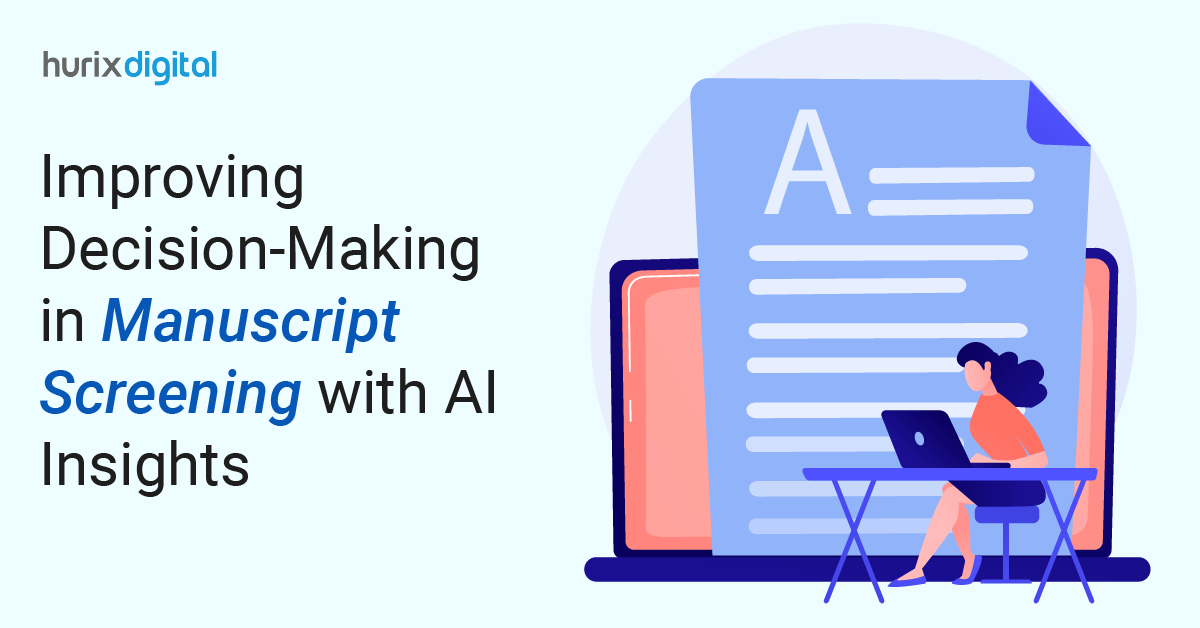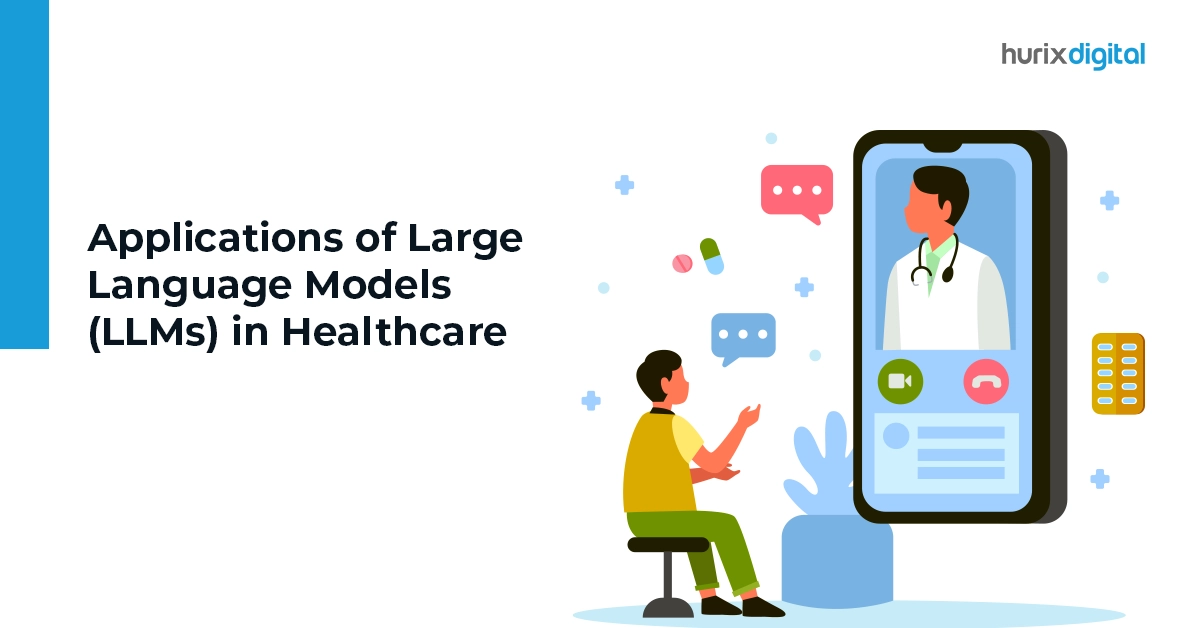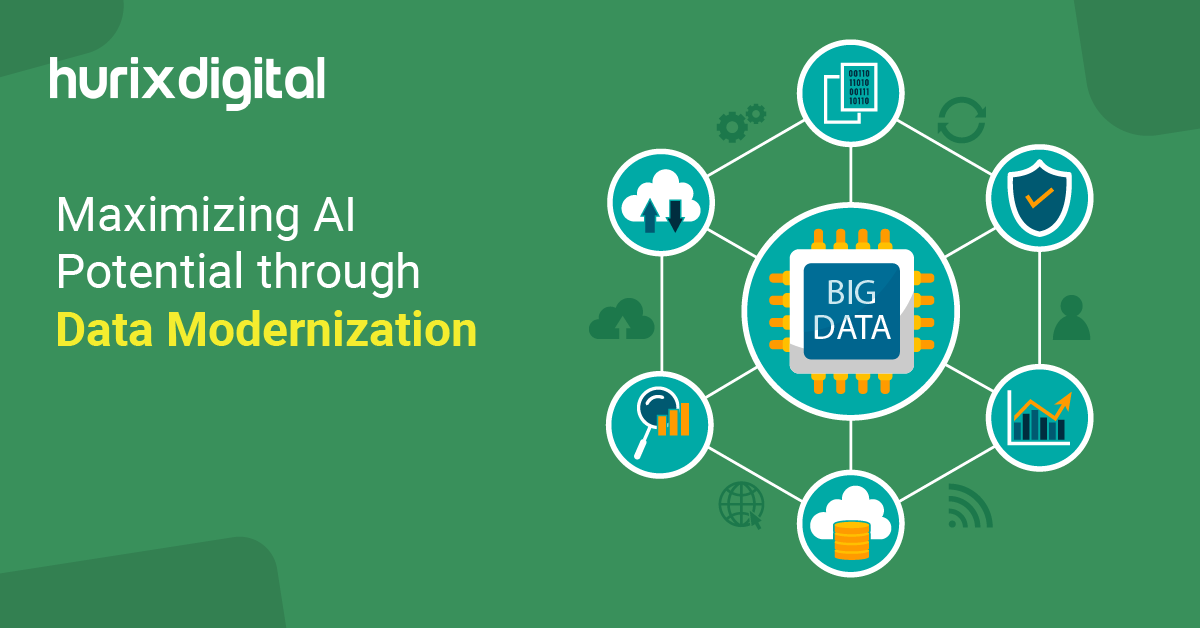
Improving Decision-Making in Manuscript Screening with AI Insights
Summary
This blog explores how AI tools enhance manuscript screening, offering speed, efficiency, scalability, cost savings, bias reduction, and plagiarism detection for academic publishers.
The volume of academic research is exploding. Over the next five years, the global market for academic research and development is expected to grow at a CAGR of 8%, with some fields predicting even more dramatic growth. Such a huge influx of information presents a significant challenge for editors and reviewers tasked with screening manuscripts for quality, novelty, and relevance.
Unfortunately, traditional screening methods, often relying heavily on manual review, are struggling to keep pace. Fortunately, artificial intelligence (AI) offers a powerful solution.
Using AI tools in manuscript screening can greatly improve the process. It will also help make efficient and objectively informed decisions. This piece delves into how AI analysis is changing manuscript screening for the benefit of authors, reviewers, and the academic community at large.
Table of Contents:
- Importance of AI Insights in Improving Manuscript Screening
- Types of AI-Powered Tools for Manuscript Screening
- Conclusion
Importance of AI Insights in Improving Manuscript Screening
1. Enhanced Speed and Efficiency in Screening
AI insights can help you access text speedily and accelerate the initial review process without much mental strain. With AI-driven tools, handle high volumes of submissions easily and avoid the delays of manual screening.
For example, basic checks of language use, formatting adherence, and similarity analysis can save up your editorial team’s labor for detailed reviews.
- Language and Grammar checks: AI tools give you access to free spelling and grammar corrections
- Formatting: AI insights verify if the manuscript submissions adhere to your specified formats, font size, and citation styles.
- Abstract Summarization: AI-powered tools help you take a quick snapshot of the manuscript, with main points highlighted by automatic summarization.
2. Better Decision Making and Quality Consistency
By using AI insights to review manuscripts, you can avoid the occasional error or inconsistency caused by manual reviews. This aids in standardizing the review process, as variability in scrutiny among different editors leads to inconsistency in manuscript selection. AI insights can benefit editors by:
- Data-driven Analysis: AI’s vast data sets make evaluating a manuscript’s accuracy, relevance, and content quality easy.
- Technical Validation: Advanced AI algorithms assess statistical errors or data discrepancies that might compromise the research quality of a submission.
- Standardized Metrics: AI tools help keep the screening process consistent. This reduces turnaround times and inconsistent screening.
Also Read: 5 Best Practices to Understand Copyediting Styles and Levels
3. Scalability to Meet Growing Submission Volumes
Manual screening is a tough task, especially when your company has no budget to accommodate new staff. AI tools make it possible to scale your manuscript screening process efficiently. AI enables scalability in the following ways:
- Quick Processing of High Volumes: AI insights allow researchers to review manuscripts faster and reduce the overall workload.
- Automated Pre-Screening: By performing initial screenings, AI filters out poorly written scripts that fail to meet your basic guidelines. These tools also detect plagiarism, ethical violations, and data errors early, saving researchers time and effort during manuscript screening.
4. Cost-effectiveness
You can invest in AI for long-term cost-effective solutions.
Through automating repetitive tasks, AI-powered tools enable you to allocate your resources strategically and maintain a balanced workflow. Some of the cost-saving advantages of AI are:
- Fewer External Reviewers Needed: AI can pre-screen manuscripts and identify those with the highest potential. Thus, it reduces the number of submissions requiring in-depth review by external experts. As a result, you are able to save a significant amount of cost on reviewer fees and honoraria.
- Labor Reduction: With AI managing initial reviews, researchers can concentrate on more complex tasks and decisions instead of the tedious early screenings, lowering the need for manual resources.
5. No Biases in Screening
Using advanced Machine Learning (ML) techniques for analysis consistently delivers precise and unbiased insights, minimizing human bias and errors. This ensures a fair and impartial evaluation based on the content quality.
- Standardized, Objective Analysis: AI applies the same quality criteria to every submission that helps regulate a fair selection process.
- Ethical Considerations and Integrity: AI tools can detect ethical issues, such as conflicts of interest or duplicate submissions, that manual screening might overlook.
6. Enhanced Plagiarism Detection and Ethical Compliance
AI scans for possible plagiarism with high accuracy by comparing manuscripts against extensive databases of published papers. It also detects authorship conflicts and ethical compliance.
The capacity of AI-powered tools for robust cross-referencing helps you protect your manuscript’s credibility by preventing unethical practices from slipping through.
- Reliable Plagiarism Detector: AI-enabled tools like Dictera or Turnitin compare manuscripts against vast databases, allowing you to spot possible plagiarism quickly and efficiently.
- Data Integrity Checks: Advanced AI algorithms spot data discrepancies and patterns that might indicate manipulation or forgery.
Types of AI-Powered Tools for Manuscript Screening
Here are some key types of AI-powered tools that come in really handy for manuscript screening:
1. Automated Pre-screening Tools
These tools perform initial checks on manuscripts to confirm they meet basic criteria such as formatting guidelines, word count limits, and referencing styles. Automating these routine checks frees up human reviewers to focus on more substantive aspects of the manuscript.
Examples: Paperpal Preflight, Enago Read
2. AI-Powered Plagiarism Detection Software
Conventional plagiarism detection software typically uses text comparison methods for identifying copied content; however, AI-driven tools take a step further by examining the context and organization of text to detect complex forms of plagiarism, like rephrasing and content appropriation.
Examples: Turnitin, iThenticate, Dictera
3. Natural Language Processing (NLP) Tools for Content Analysis
NLP tools analyze the language of a manuscript to assess its clarity, conciseness, and readability. They also identify key themes, concepts, and arguments, helping editors quickly grasp the essence of the manuscript.
Examples: Grammarly, QuillBot
4. Machine Learning (ML) Algorithms for Quality Assessment
ML algorithms can be trained on large datasets of published articles to learn patterns and features associated with high-quality research. These algorithms then predict the likelihood of a manuscript being accepted for publication based on its content, novelty, and relevance.
Example: Dimensions Research Integrity
5. AI-Assisted Peer Review Platforms
These platforms integrate AI tools to streamline the peer review process. They can automatically match manuscripts with suitable reviewers, provide reviewers with relevant information and resources, and even offer feedback on the quality of their reviews.
Example: Clarivate Publons
Also Read: 6 Best Practices for Choosing a Copyediting Service for Multilingual Content
Conclusion
Utilizing AI tools in the manuscript screening process is a valuable approach to facilitating decision-making, enhancing consistency, and upholding rigorous quality standards. By minimizing the editorial burden and enabling more concentrated oversight, AI contributes to the caliber of accepted articles while aiding the professional development of editorial staff.
Adopting this technology places you at the top of contemporary publishing, prepared to address the challenges of an expanding and changing industry. As AI technology continues to evolve, we can expect even more sophisticated and powerful tools to emerge, further transforming academic publishing.
If you want an AI-backed comprehensive solution for your publishing needs, Hurix Digital is the answer. This tool helps you overcome challenges like writer’s block, improve decision accuracy, and ensure quality in your editorial process.
Connect with us today and discover how AI-powered solutions radically alter your manuscript screening process!

Vice President – Digital Content Transformation. He is PMP, CSM, and CPACC certified and has 20+ years of experience in Project Management, Delivery Management, and managing the Offshore Development Centre (ODC).








